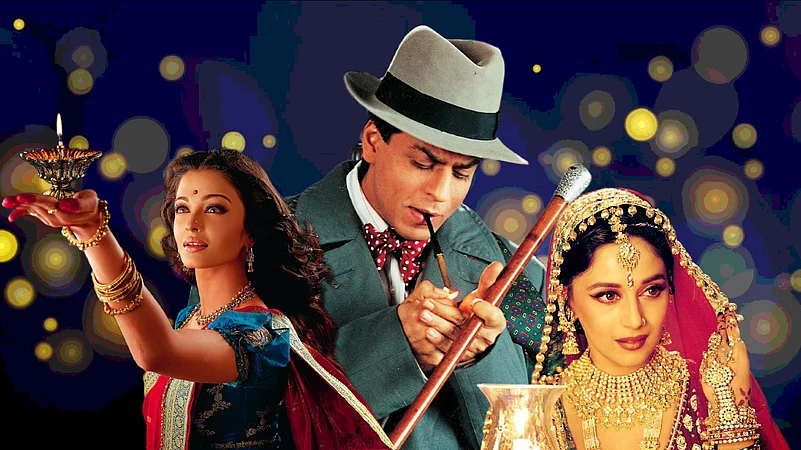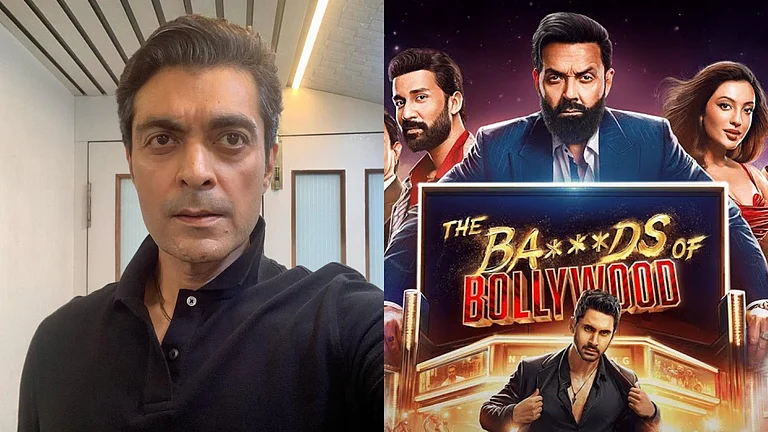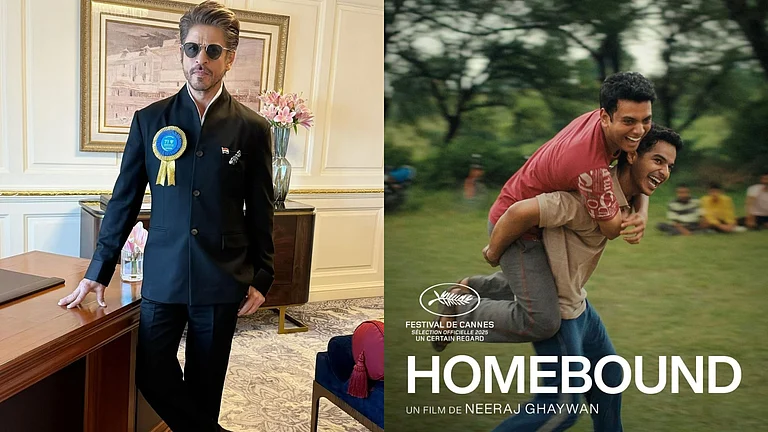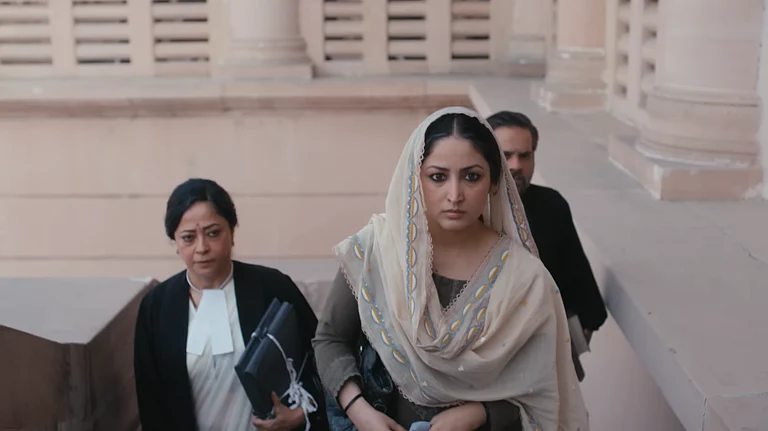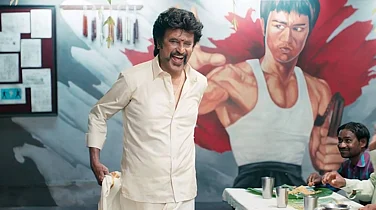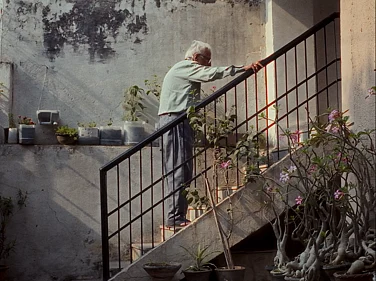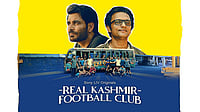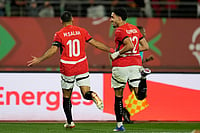Sanjay Leela Bhansali’s Devdas, released on this date in 2002, was a film of many firsts. Clocking a budget of about fifty crores, it was the most expensive film in the history of Bombay cinema until then. Chandramukhi’s kotha, set in an ornate palace, reportedly cost about twelve crores while Paro’s house, which shimmered with 1,57,000 pieces of stained glass, was budgeted at three crores. It marked the debut of Shreya Ghoshal, whose singing prowess continues to enrapture. Screened outside competition at the fifty-fifth Cannes Film Festival, Devdas became the film that broke the rough patch Indian cinema suffered after its 1950s run, with films like Awara (1951), Do Bigha Zameen (1953), and Pather Panchali (1955, on the international stage. As Anupama Chopra notes in King of Bollywood (2007), “Until Devdas, mainstream Hindi films were largely film-festival untouchables.” In an interview with Chopra, Shah Rukh Khan recalled, “It may not have been, but it seemed to us that Cannes was about Devdas.”
Moreover, it became the film that helped Khan demystify his earlier Yash Raj-Karan Johar coded persona of Raj or Rahul, typified as a carefree and high-spirited lover. While initially hesitant, Khan ultimately acquiesced to the role—once performed with quiet, languishing gravitas by Dilip Kumar in Bimal Roy’s 1955 black-and-white classic Devdas, recognised by many as a more faithful adaptation of Sarat Chandra Chattopadhyay’s novel of the same name. In addition, Bhansali’s film became the vessel through which linkages between organised crime and the film industry were unravelled like never before. Its financing by the diamond merchant, Bharat Shah, came under scrutiny when he was arrested in January 2001, for aiding and abetting the underworld don, Chhota Shakeel, the frontman of Dawood Ibrahim. However, with Bhansali refusing to scale back his grandiose vision, despite continued obstacles after Shah’s arrest, the shoot was finally wrapped on April 29, 2002.
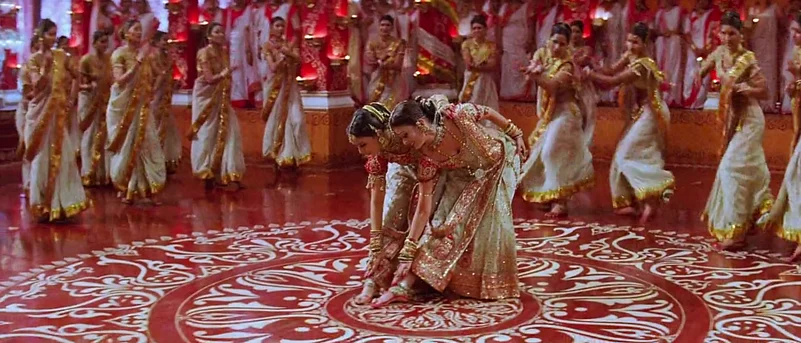
What was deemed unrealistic by the film critics at the time—Paro (Aishwarya Rai Bachchan) and Chandramukhi (Madhuri Dixit) meeting and later dancing to the song “Dola Re”—is perhaps what survives brilliantly in the present. The recent iteration in Karan Johar’s film Rocky Aur Rani Kii Prem Kahaani (2023) with Ranveer Singh and Tota Roy Chowdhury performing to “Dola Re” is a testament to the song’s rich iconicity. When Chandramukhi says to Devdas, “Ishq agar insaan ka roop le le, toh uska dil aur chehra bilkul Paro jaisa hoga” (If love could have a corporeal form, it would appear like Paro), one wonders what kind of queer possibilities are engendered as Chandramukhi looks at Paro and, in certain moments, how Paro returns that gaze.
The dance sequence stands as a moment where the two recognise—in texture, tone, and synchrony—each other’s devotion to and love for the same person, while Devdas, on his part, is already deep into misery and hamartia. As an inebriated Dev unnerves Dharamdas, his attendant, at the ghat by urging a priest to perform his last rites—to ritually mark his death while being alive before partially immersing himself into the river—the echo of the titular refrain “Dola re” arrives in the film. The contrast is unmistakable. Love blooms, in red, with Paro and Chandramukhi. Love wilts in blue through Devdas’ melancholy.

So, one wonders, does their performance signify an intimacy outside of their relationship to Devdas? Does it create a rupture, so mercurial and erotic, that it was initially met with censure in the name of being unfaithful to the source text? Typical of the divide between the heroine and the tawaif, one recalls that Suchitra Sen’s Paro never danced; it was reserved squarely for Vyjanthimala’s Chandramukhi in Bimal Roy’s film. On the other hand, from “Silsila Ye Chaahat Ka” to “Dola Re,” Rai Bachchan’s Paro is not conceived outside the realm of performance. Within the dance sequence of “Dola Re,” Rai Bachchan’s and Dixit’s bodies merge, touch, undulate, and pirouette. Their union transcends their desire for Devdas. In their movements—complementing and completing each other’s gestures—a bodily familiarity with the “Other” surfaces to make us privy not simply to spectacle, but also to homo-eroticism.
The songs endure, and only through them does the romance endure. What led Khan to agree to play the eponymous character, Anupama Chopra recounts, is that Devdas’ love is marked by a particular “possessive cruelty”—in one scene, he crushes a bee; otherwise, it would have touched Paro. Khan said in an interview, “Devdas [applies] to ninety percent of men… Men are afraid of commitment. They want to hurt the woman they love. It’s a male thing. I am also Devdas without the alcohol.” But there is also an ingenious tenderness in Khan’s reprising of Dev in the beginning of the film, especially in the song “Bairi Piya” and “More Piya.” Interestingly, Rai Bachchan often commands the screen as Paro, teases Khan’s Dev like no other character in the film, and captivates the spectator unabashedly. A similar bewitchment, though differently woven, can be said about Dixit’s performance as Chandramukhi.

The climax remains one of the facets that Bhansali takes directly from the 1955 version. He stylises it, yes, but the form remains the same. The memorable shot of a flickering, indistinct image of Paro registered by Devdas, before he surrenders to death, has a precedent in cinematic history. This blurry, barely perceptible image of Paro flickers on the window of the train as Dilip Kumar’s Dev struggles to find any place whatsoever in the world. With Chandramukhi’s voice filling the background, he realises his promise to Paro. The journey to Paro’s mansion in the bullock-drawn carriage—with life flashing before his eyes—provides undeviating impetus to Bhansali’s depiction of the film's denouement. The race against time culminates in an impactful tragedy, which prevents the audience from taking any sigh of relief. There is no note, no sound, no sensation left in the wake of death. The film ends like its predecessor, in a state of void.
Srishti Walia is a doctoral student of Cinema Studies at the School of Arts and Aesthetics, Jawaharlal Nehru University, New Delhi.






